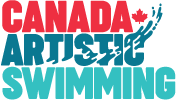Synchro Canada at the Olympic trials for Synchronized Swimming in Rio de Janeiro, Brazil – Part One
In a sport where athletes compete against a clock, such as swimming or athletics, as the sport evolves, and athletes are stronger and faster, equipment improvements are incorporated, world records fall and new ones are established. But what do you do in a judged sport when the athletes and coaches have taken the sport beyond the capacity of the system used to judge it?
Synchronized swimming has evolved. Although modified in 2013, the current judging system is struggling to put value to the difficult highlight moves and to track difficulty in general, as well as reflecting creative choreography that teams are now incorporating into their routines. And just as other sports have had to adapt and create new judging systems, the time may have come for the same process to get underway in the world of synchronized swimming.
There are many best practices from recent work in other judged sports that can provide a roadmap or examples for synchronized swimming. Artistic gymnastics moved away from the system that used the 10.0 score to indicate a perfect routine in 2006, and figure skating changed from its 6.0 system of perfect scores in 2004. By moving away from finite ‘perfect’ scores to ones with no upper limit, it provided judges with an outlet to indicate greater distinctions in performances. Both of these sports, along with such other judged sports as freestyle skiing, trampoline and diving, use various combinations of assigned difficulty of the individual moves with scores for execution of either the specific element or the overall performance. Regardless of the sport, the different judging systems have been evaluated, tested and adapted over the years in response to feedback from competitors, coaches, officials and federations.
At the international level, the 17-member FINA Technical Committee for Synchronized Swimming is responsible for all of the technical aspects of the sport. Looking at ways to improve the ability of the judging system to keep pace with the evolution of the sport falls under this committee, whose mandate includes ‘to analyse the requirement for improvements of the respective discipline, and to consider corresponding proposals received from any Member.’
Canada’s Lisa Schott sits on the Technical Committee and is excited about the work Synchro Canada is doing to assist FINA who has already begun looking at ways to move the sport forward. “We really believe strongly that the timing is right to implement major changes in our sport. And Canada is in a position to help, by funding research to provide some really strong, baseline data that can be used in assessing our needs in creating an even more effective judging methodology.”
 The Calgary, Alberta-based Schott, who is a longtime volunteer and former president of Synchro Canada, explained how the research can assist the sport. “We took money from our performance analysis budget to engage the analytics department at Carleton University to conduct a review of the current judging system. While many people feel anecdotally that the judging system needs to change, we don’t have hard data to determine exactly what and how. Once the study is complete, we plan to share the results with FINA to provide really strong data to indicate where changes need to occur. Ultimately, we feel that this will help our judges be even better, and provide our athletes who are so passionate about this sport, with the more mature judging system they deserve.
The Calgary, Alberta-based Schott, who is a longtime volunteer and former president of Synchro Canada, explained how the research can assist the sport. “We took money from our performance analysis budget to engage the analytics department at Carleton University to conduct a review of the current judging system. While many people feel anecdotally that the judging system needs to change, we don’t have hard data to determine exactly what and how. Once the study is complete, we plan to share the results with FINA to provide really strong data to indicate where changes need to occur. Ultimately, we feel that this will help our judges be even better, and provide our athletes who are so passionate about this sport, with the more mature judging system they deserve.
The stimulus for the research came from Synchro Canada’s own performance analysis, which uses sophisticated technology to assess its own team’s performance against the top teams in the world. The findings from a bio-mechanical perspective were not always reflected in the current judging methodology. Using the results from more than 3,000 simulated competitions, the research will use statistical analysis to assess:
- Is the application of judging principles consistent between events and from judge to judge?
- Does the current system protect against bias of all types?
- Does the system support application of FINA rules?
Schott is eager to see what the final data analysis will indicate. “We have the resources and ability to support FINA through this study, and I am certain that the findings will be statistically sound and truly valuable. I’m confident that once it is available to our member federations, there will be some really creative and engaging ideas on how we can continue moving our sport forward. We would love to see federations bring forward proposals for completely new judging systems and see where it can go!”
In addition to working on implementing a new judging system, there are other changes on the horizon for synchronized swimming. With about 60 countries worldwide now involved in the sport, FINA is looking at creating an annual competitive circuit, similar to diving and swimming. A World Cup Circuit, which along with existing World Championships, would award points toward a world ranking system, leading to a new Olympic qualifying system that could be used as early as 2020 for the Summer Olympic Games in Tokyo, Japan. The FINA General Congress will meet in 2017, where any rule changes would be submitted for approval.
As Schott declares, “it is an exciting time to be involved in our sport, and I for one, can’t wait to see what the next few years bring.”


